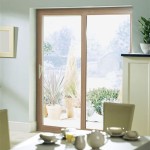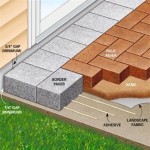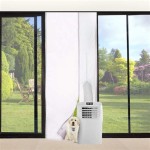Paint Cast Aluminum Patio Furniture
Cast aluminum patio furniture offers a blend of durability and aesthetic appeal, making it a popular choice for outdoor spaces. The application of paint further enhances its longevity and allows for customization to complement various design schemes. This article explores the process and considerations involved in painting cast aluminum patio furniture.
Preparing the Surface
Proper surface preparation is crucial for achieving a professional and long-lasting paint finish. Neglecting this step can lead to paint adhesion issues, resulting in peeling and chipping. The following steps outline the essential preparation process:
1. Cleaning: Begin by thoroughly cleaning the furniture to remove dirt, grime, and any loose debris. A solution of mild detergent and water, along with a scrub brush, is typically sufficient. For stubborn stains or mildew, a specialized cleaner may be necessary.
2. Rinsing: After cleaning, rinse the furniture thoroughly with clean water to remove any residual soap or cleaner. Ensure all traces of cleaning agents are eliminated to prevent interference with paint adhesion.
3. Sanding: Lightly sand the entire surface of the furniture with fine-grit sandpaper (e.g., 220-grit). This step creates a slightly roughened surface, promoting better adhesion of the primer and paint. Focus on smoothing any rough spots or imperfections.
4. Repairing: Address any damage, such as cracks or chips, before painting. Use an appropriate metal filler or epoxy to repair these imperfections, ensuring a smooth and even surface.
Priming the Furniture
Applying a primer specifically designed for metal is essential for achieving optimal paint adhesion and durability. The primer acts as a bonding agent between the aluminum and the topcoat, preventing premature peeling and chipping.
1. Primer Selection: Choose a high-quality metal primer, preferably one formulated for exterior use. Self-etching primers are particularly effective for aluminum, as they create a chemical bond with the metal surface.
2. Application: Apply a thin, even coat of primer to the entire surface of the furniture using a brush, roller, or spray gun. Ensure complete coverage, paying attention to crevices and hard-to-reach areas.
3. Drying Time: Allow the primer to dry completely according to the manufacturer's instructions before applying the topcoat. This typically requires several hours or overnight.
Painting the Furniture
Selecting the right paint and applying it correctly are vital for achieving a durable and visually appealing finish.
1. Paint Selection: Opt for an exterior-grade paint specifically formulated for metal surfaces. Acrylic latex paints are a popular choice due to their durability, color retention, and resistance to chipping and peeling. Consider factors such as weather resistance and UV protection, especially for furniture exposed to direct sunlight.
2. Application Method: Choose an application method suitable for the type of paint and the complexity of the furniture design. Brushes are ideal for intricate details, while rollers are efficient for larger, flat surfaces. Spray painting offers a smooth, even finish but requires proper ventilation and safety precautions.
3. Multiple Coats: Apply multiple thin coats of paint rather than one thick coat. This allows each coat to dry properly and prevents drips and runs. Allow sufficient drying time between coats according to the manufacturer's instructions.
4. Finishing Touches: Once the final coat of paint is dry, consider applying a clear sealant to enhance the durability and weather resistance of the finish. This is especially beneficial for furniture exposed to harsh environmental conditions.
Choosing the Right Paint
The selection of the correct paint type is crucial for achieving a lasting and beautiful finish on cast aluminum patio furniture.
1. Oil-Based vs. Water-Based: Oil-based paints offer excellent durability and adhesion, but they require longer drying times and emit strong fumes. Water-based acrylic paints are easier to clean up, dry faster, and have lower VOC content, making them environmentally friendly.
2. Finish Options: Consider the desired aesthetic when selecting a paint finish. Glossy finishes provide a sleek and modern look, while satin or matte finishes offer a more subdued appearance. Textured finishes can also be used to create unique visual effects.
3. Color Selection: Choose a color that complements the surrounding environment and personal preferences. Explore various color palettes and consider the existing décor of the outdoor space.
Maintaining Painted Furniture
Proper maintenance helps preserve the beauty and longevity of painted cast aluminum furniture.
1. Regular Cleaning: Regularly clean the furniture with mild soap and water to remove dirt and grime. Avoid abrasive cleaners, as they can scratch the paint surface.
2. Touch-Ups: Address any chips or scratches promptly by applying touch-up paint to prevent further damage and maintain the overall appearance.
3. Seasonal Storage: Consider storing the furniture indoors during harsh weather conditions or periods of extended disuse to protect it from the elements and prolong its lifespan.
4. Protective Covers: Using furniture covers can shield the painted surfaces from excessive sun exposure, rain, and other environmental factors, further enhancing their longevity.

Redeeming Hampton How To Paint Aluminum Patio Furniture

Redeeming Hampton How To Paint Aluminum Patio Furniture

Refurbishing Cast Aluminium Metal Garden Furniture

Is Your Cast Aluminum Patio Furniture Paint Finish Peeling Off And Would Love In 2024 Iron

Redeeming Hampton How To Paint Aluminum Patio Furniture

Cast Aluminum Patio Furniture Hgtv

Patio Furniture Update Rust Oleum

How To Spray Paint Metal Outdoor Furniture Last A Long Time H2obungalow

How To Restore Metal Outdoor Furniture So It S Better Than New

Quick Way To Refresh Your Cast Aluminum Furniture Use Krylon Rust Protector Dark Patio Painted Outdoor Aluminium Garden








